Since the birth of the computer, although the form of programming has been continuously iterated with the continuous advancement of hardware and software, people engaged in the computer technology industry have always been closely linked to the task of writing code. Therefore, how to improve the efficiency and quality of software development has always been one of the important issues in the field of software engineering.
On the one hand, this is due to the fact that a large number of similar codes are reused in different software development processes. Writing repeated codes many times will greatly reduce the developer's development efficiency and enthusiasm for creation; on the other hand, high-quality code with clear structure and complete functions It can make the software development process clear and can effectively reduce maintenance costs in the later stage.
A stable, safe, and high-performance code generator allows developers to directly write and modify their code requirements on the basis of source code to realize business logic, including generating and modifying pages. Thereby reducing the programming time of developers by 80%, allowing them more time to study software business processes, simplifying the development process, shortening the development cycle, improving development efficiency, and saving development costs.
LeaRun Rapid Development Framework (JAVA Monolithic Edition) is an agile development platform based on SpringBoot+ code generator, which adopts a front-end and back-end separation architecture. Simple functions such as online configuration forms and design processes can be realized through configuration. The powerful code generator allows The front-end and back-end codes are generated with one click, and programmers only need to follow the development wizard step by step. At the same time, it realizes the loose coupling design, separates the process from the form and supports flexible configuration of task nodes, which not only ensures the confidentiality of the company's process, but also reduces the workload of developers. Moreover, its source code delivery mode allows programmers to make secondary modifications in combination with functions and requirements, and make deeper extensions.
The code generator of the LeaRun rapid development framework has three sets of development templates, which are data-first templates, interface-first templates, and simple templates.
Data-first templates are suitable for databases that already have complete table structure and table field information; interface-first templates are suitable for situations where tables are not created in the database in advance, and table names and table structures will be randomly generated after the form is created, and then developers can Manually adjust the table name and table structure according to their own business needs; the simple template is suitable for users without any development foundation. After the user finishes designing the form, the background will automatically generate the table structure and use it directly after design.
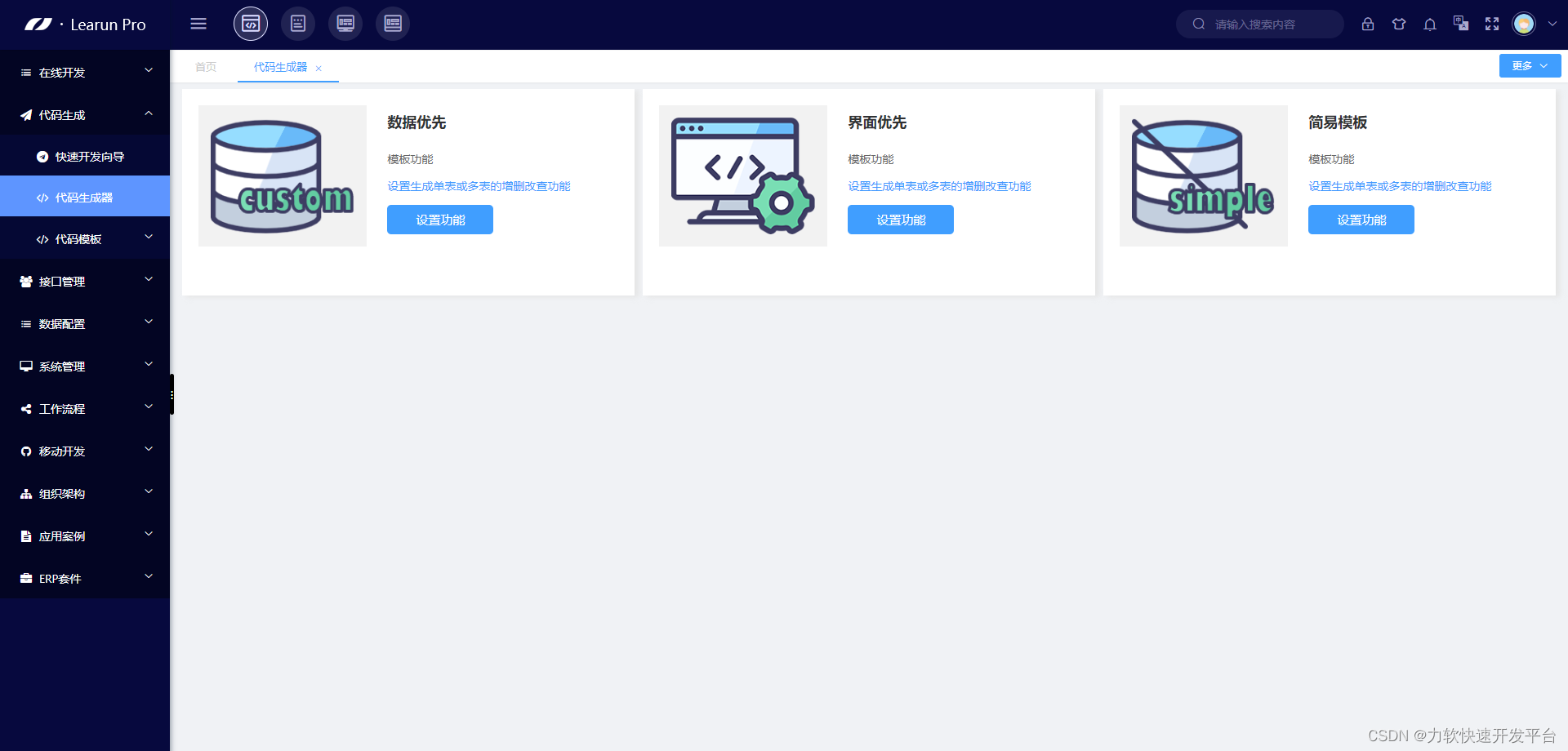
Take the data priority template as an example, click [Set Function], select the database in the database list on the left, after selecting the database, all the data tables of the data will be displayed on the right, select one or more data tables you need, and select When there are multiple tables, it is necessary to combine multiple tables and set up associated fields.
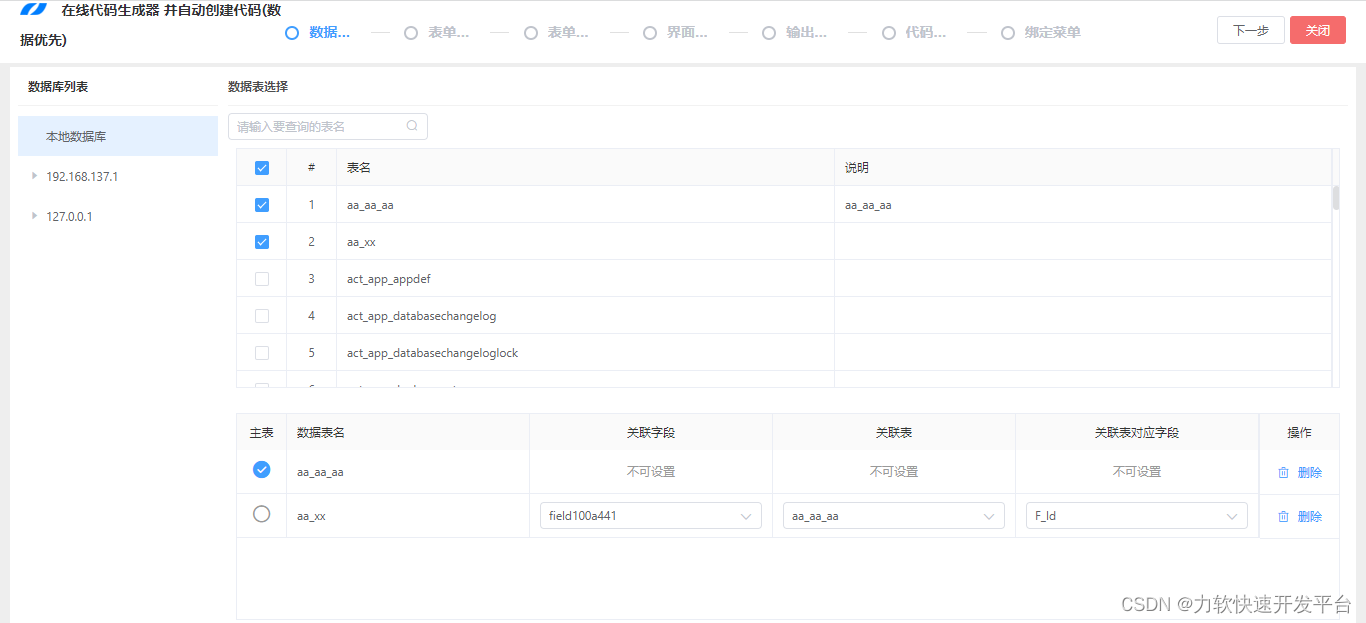
Click [Next] to enter the form design interface. LeaRun is equipped with a visual design function and comes with a variety of components. Just drag and drop the components on the left to the middle form interface to use it. On the right side, you can set the properties of components and forms, and bind components to corresponding table fields.

After completion, start interface property configuration. Users can configure query conditions based on the fields set in the form design, and then search based on these fields.

In the list configuration interface, you can set the field, alignment, width and paging of the component, and you can set the button on the table at the top to perform quick import and export operations, and a tree filter box can be generated on the left.
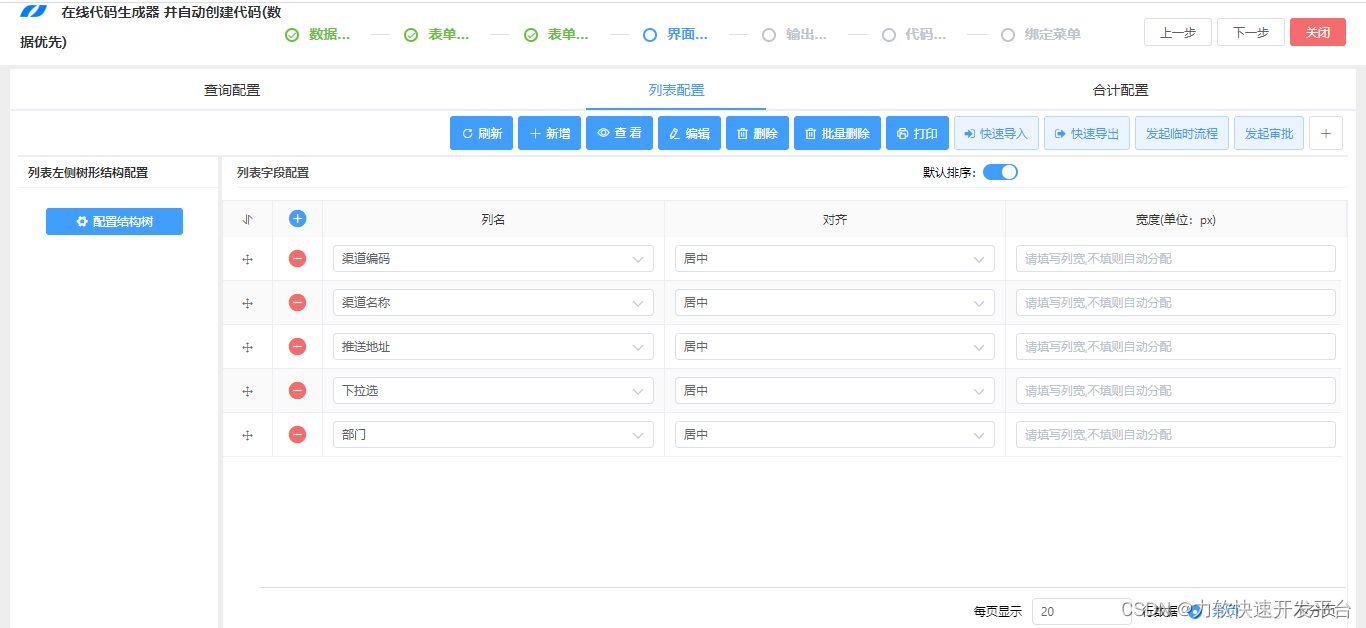
On the aggregate configuration interface, users can check the fields that need to be displayed statistically to perform statistics on numeric fields. When the list is displayed, a statistical value will be displayed based on the aggregated fields.
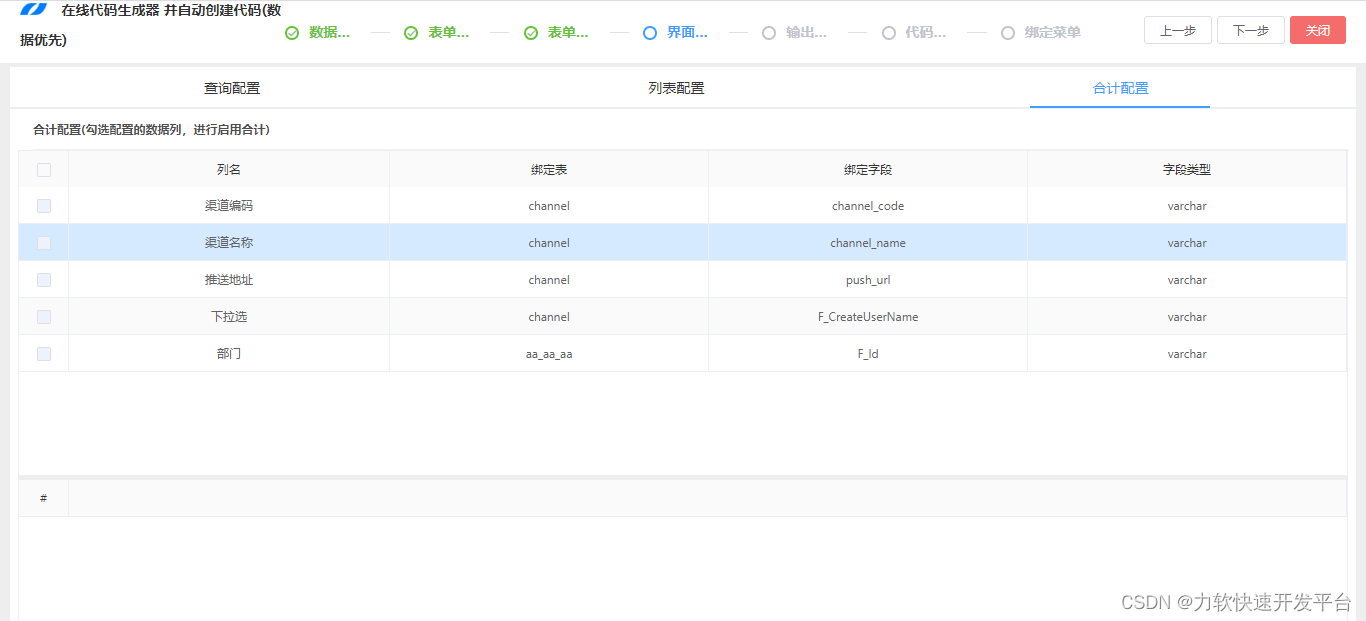
Click [Next] to configure the output, set the output configuration, creator, function class name, function description and other information; the output directory of the entity layer, the output directory of the control layer, and the output directory of the front-end file are automatically generated, and the user can also choose whether to generate only Mobile code and whether to generate front-end code.
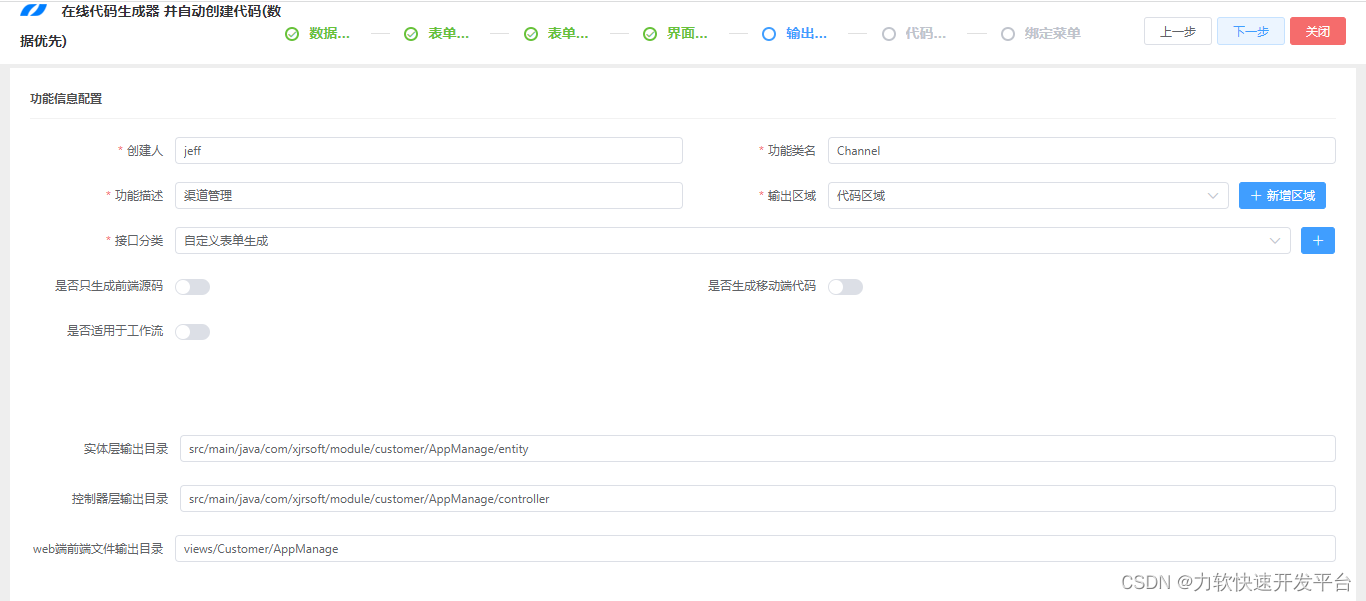
After the design is completed, the corresponding code will be generated. Users can preview the actual generated code.
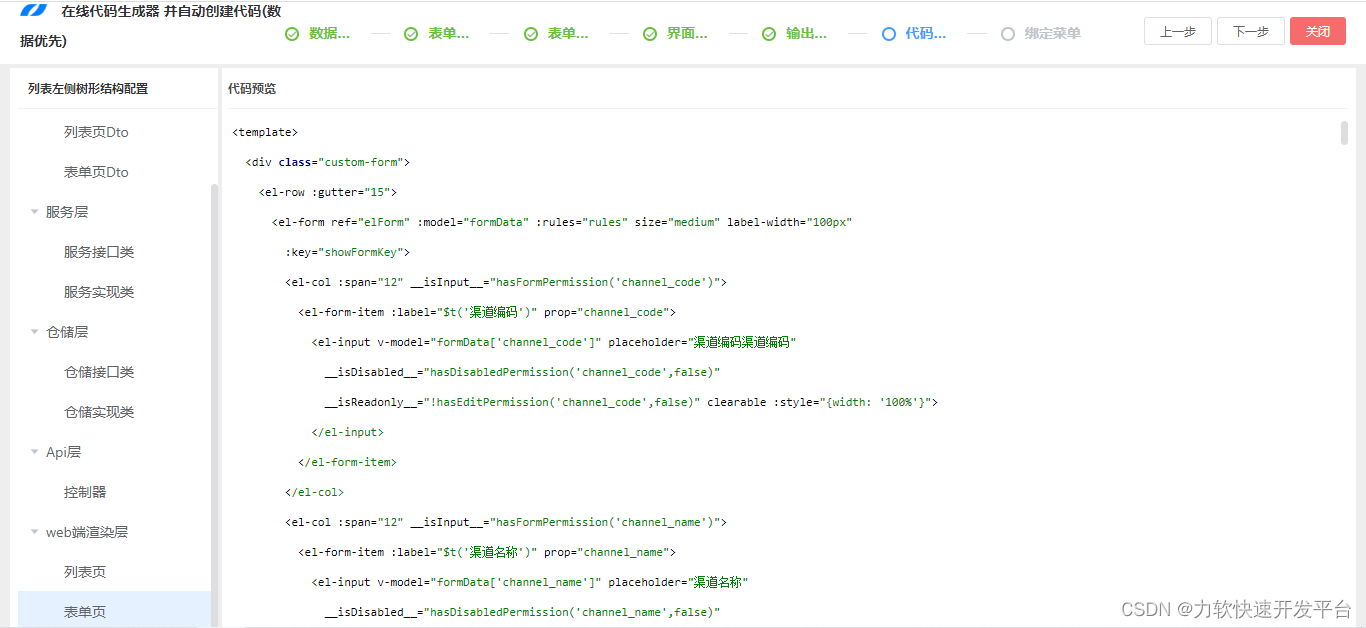
Finally, bind this function to the corresponding menu, and then click Save to put it into use.

The code functions generated by using the LeaRun rapid development framework include adding, deleting, checking and modifying, batch deleting, sorting, exporting and importing into excel, etc. If there is no complicated business logic, the user does not need to write a line of code by hand.